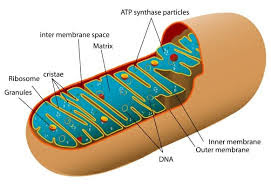Glycolysis | Cellular Respiration | Biology
Respiration characterizes a living organism (human or animal) - there is no live without respiration. We live immersed in gases since the earth is filled with gases. Among all gases in the atmosphere, oxygen gas is inhaled for cellular respiration in animal while plants breath utilizes carbon IV oxide for their usage during respiration.
Cellular respiration is the step-by-step process involved in the oxidation of sugars to produce energy.
In the ecological system, green plants are the main source of food and energy to animals and some other plants (non-green plants). They manufacture their food by a process called photosynthesis by utilizing energy from external source (the sun). When the food products from these plants are consumed, the essential nutrients are obtained during digestion. The carbohydrate is digested into soluble glucose molecule which then assimilates into the blood stream and is therefore transported into the cells. This is the point where cellular respiration begins.
The oxidation of sugar molecules in the cell to provide energy in form of Adenosine Triphosphate (ATP) is known as cellular respiration commonly known as respiration.
Anaerobic Respiration
Anaerobic respiration is a type of respiration in which oxygen is not necessarily needed for respiration to occur. Organism that respire anaerobically may respire with or without oxygen. It occurs mostly in fungi e.g. moulds, mushroom and even in higher organisms resulting to the production of carbon-di-oxide and alcohol as in yeast. This has been employed over years in the brewery industry to produce wine and alcoholic drinks.
Pyruvic acid- the final product of this stage is moved on to the kreb cycle for further biochemical reaction.
It takes place in the cell.
Glycolysis- Stage 1
Glycolysis means ‘glucose splitting’. It involves the splitting of glucose into two 3- carbon molecule known as pyruvic acid.
These pyruvic acid molecules move on to the Kreb’s cycle. The energy used to split glucose is provided by two molecules of ATP. It begins with the phosphorylation of glucose to glucose-6-phosphate and soon till pyruvic acid is produced. The further reaction of pyruvic acid is only dependent on the nature of respiration (i.e. whether oxygen is present or not). If oxygen is present, pyruvate enters into the mitochondria which is converted into acetyl co-enyme A (acetyl coA) giving-off carbon-di-oxide and water but in the absence of oxygen, the pyruvate is converted to lactic acid in animal, while in plants it is converted to alcohol and Carbon IV oxide.
Nonetheless, there is only 2 ATP produced in this stage unlike the other stage.
In glycolysis, oxygen is not a need for reaction to occur; if oxygen is present, reaction will occur and if oxygen is not present reaction will still occur. Meanwhile, the Kreb’s cycle reaction will not occur if oxygen is absent.
• Glycolysis takes place in the cytosol of the cytoplasm of a cell.
• Only 2 ATP is produced
• Only 2 ATP is used to start the reaction process.
• Its products are pyruvic acid, lactic acid and CO2 in animal, alcohol and CO2 in plants in no oxygen is present, H2O and CO2 if oxygen is present.
AEROBIC RESPIRATION
This is a form of respiration in which oxygen is needed. It involves the use of oxygen to further synthesize energy by the oxidation of glucose. It takes place in the mitochondria of the cell. Most organisms in the animal kingdom are known to respire aerobically.
The Mitochondria
The mitochondria is an organelle in the cell where kreb cycle takes place. It consists of two membrane; an inner bi-membrane and an outer bi-membrane each separated by a space called ‘intermembrane spaces’. The space enclosed by the inner membrane is called the matrix while the folding of the inner membrane is called the ‘Cristae’. The cristae is the point where most activities takes place.
In the mitochondria, the highest amount of ATP is produced. This is the reason it is regarded as the ‘power house of the cell’.
ATP SYNTHESIS
The pumping of hydrogen ions across the inner membrane creates a greater concentration of the ions in the intermembrane space than in the matrix. This chemi-osmotic gradient causes ions to flow back across the membrane into the matrix where their concentration is lower. ATP synthase acts as a channel protein helping the hydrogen ions cross the membrane. It also acts as an enzyme forming ATP from ADP (Adenosine diphosphate) and inorganic phosphate. After passing through the electron-transport chain, the electrons combine with oxygen to form water. This is why oxygen is needed and in its absence, its reaction will not occur.
The Kreb Cycle- Stage 2
The Kreb cycle is also known as Citric Cycle, C3 cycle, Tricarboxylic Acid Cycle (TAC). It begins with the pyruvic acid formed during glycolysis combined with acetylcoA to form citric acid.





Comments
Post a Comment